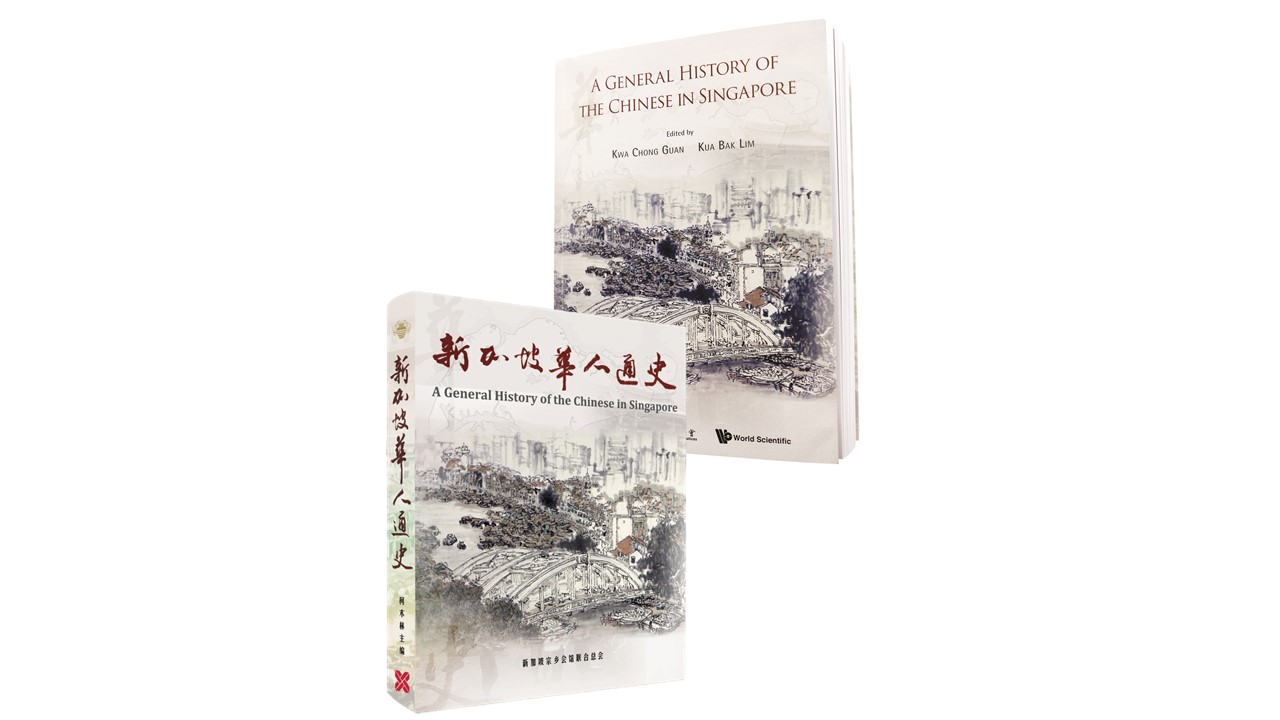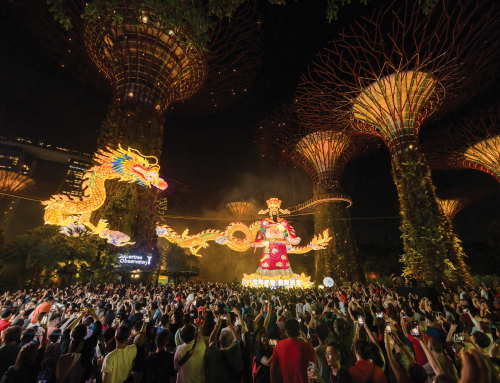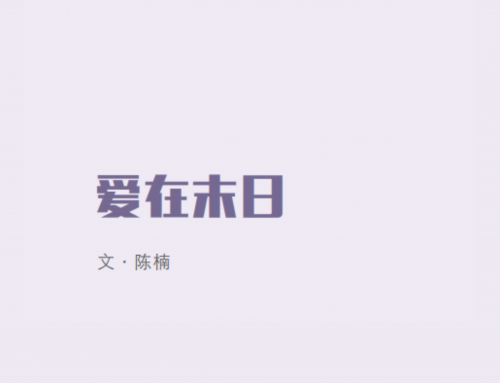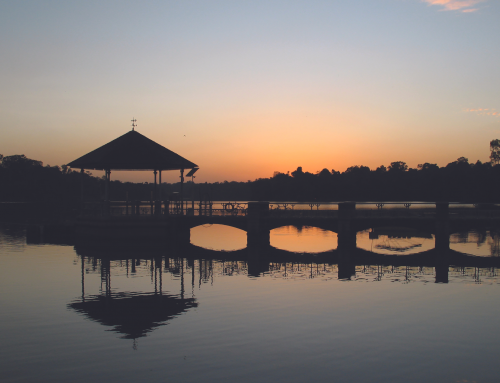跨世纪的史册
文 · 柯宗元 中译·柯木林

【编者按】《新加坡华人通史》是新加坡宗乡会馆联合总会为纪念成立30周年,暨新加坡建国50年而出版的一本历史专著,由本地资深历史学者柯木林主编。这部厚达824页的史籍,记载了新加坡有史以来至2015年华人社会的发展历程。出版后,福建人民出版社于2018年刊行了中国版。2019年,为配合新加坡开埠200周年,柯宗元教授与柯木林又在中文版基础上,联合主编了英文版。中文版和英文版的《新加坡华人通史》内容上大同小异,英文版从不同视角,反映新加坡华人社会的发展。中英文版可以参照互补,以便读者更了解整个新加坡华人社会的全貌。
2016年3月,柯木林和林孝胜邀请我共进午餐,他们想要和我讨论编写《新加坡华人通史》英文版事宜。柯木林是中文版《新加坡华人通史》主编,孝胜为副主编。孝胜也是我20年前口述历史馆的同事,柯木林是资深的华人史学者,2014年他曾邀请我参与南洋柯氏公会的书刊出版工作。
我犹豫了一阵子,决定与他们共进午餐。我想,这厚重的《新加坡华人通史》翻译工作,我又能贡献什么?据我所知,出版《新加坡华人通史》主要目的是让读者了解华人社会的历史发展,让读者知道过去100多年来华族先贤在经济、社会及政治发展上的贡献。木林和孝胜在午餐时解释道,他们并不想把《新加坡华人通史》直译为英文,而是要重写。因为纯粹的英文翻译,对广大读者了解华人历史并没有什么意义。
在中文版的基础上,他们希望我参与英文版的编辑工作,这样就可以向非华族人士,展现新加坡华人的历史。我虽然有点顾虑,但最终还是接受他们的邀请,同意参与编写英文版《新加坡华人通史》的工作。如此一来,可以通过不同的资料和史观,向更广大的读者群呈现新加坡华人历史。作为互补,中英文版的《新加坡华人通史》可让读者更深一层了解新加坡华人史全貌。
我很荣幸能参与这项工作,把他们编写的《新加坡华人通史》与其他地区的华人发展历史联系起来。英文版《新加坡华人通史》侧重于殖民地时期华社如何成长,以及与土生华人与峇峇社会的互联关系。其中有四个章节特别着重撰写土生华人或峇峇,这是华文版较少论及的。其他新增章节也详细讲述了19世纪初期新华社会,及其与多数东南亚华人祖居地华南和周边地区的贸易、商业及社会联系。
新增篇章的目的是重建一个多样化的新华社会。举个例子,中文版的《新加坡华人通史》很少谈及1950年代的左翼政治运动。然而在英文版中,我们特辟一章,由陈友利教授撰写林清祥与其左翼运动在建国初期的斗争。还有黄坚立和林源福撰写的华文教育问题,也给予重视。
英文版《新加坡华人通史》的最大贡献,是在于展现了华人并不是跟随莱佛士或是响应第一任驻扎官法夸尔的号召到来新加坡。相反,早在莱佛士开埠前华人已经抵达新加坡。他们在这里的发展,是伴随着周边地区的华商贸易。由于早年这批闽商与潮商的经济活动,带来了往后新加坡的历史发展。
英文版的新篇章企图展现新华社会的发展,不仅仅是响应殖民地政府的号召,同时也是对本地区更宽广的经济、社会与政治变化的一种反应。19世纪及20世纪上半叶,这些变化导致新华社会的发展,在联系本地区华社与中国发展的同时,也展现了具自身的特色与认同。1949年以后,新华社会的发展,更散发有异于其他地区的华社,尤其是与中国社会的不同。本地区华社在新兴的国度里,必需反思自己的定位,传统的血缘、社区及贸易的联系,如何有异于迅速崛起的现代化中国。
《新加坡华人通史》可以说是我们在寻找新华社会发展轨迹的一个工作汇报。这部通史有26位撰稿者,其中10位曾担任有关部门要职,3位是资深研究员或咨询顾问。换言之,一半撰稿者,包括两位主编及编辑,都是乐龄人士。因此如果将来有机会再编写华人通史,必需后继有人,至少有一半是年轻人,这样才能使研究工作可持续性发展。
(作者为新加坡国立大学历史系客座教授,曾任国家博物馆馆长)
A historical work that transcends a century
Editor’s Note The book A General History of the Chinese in Singapore (GHCS), edited by Kua Bak Lim, a renowned local historian, was published by the Singapore Federation of Chinese Clan Associations (SFCCA) in 2015. This 824-page treatise, written in Chinese, attempts to document over 700 years of the history of the Chinese in Singapore from the early years till 2015. This book serves to commemorate both the 30th Anniversary of SFCCA as well as the SG50. After its publication, the Fujian People’s Publishing House republishes the book in China. However, due to overwhelming response, in 2019, Prof Kwa Chong Guan and Kua Bak Lim jointly published the English edition of the book to coincide with the Singapore Bicentennial. There is essentially no vast difference between the Chinese and English editions, except that the English edition attempted to present the different viewpoints in understanding of the history of the Singapore Chinese to a broader audience. Both editions of the GHCS therefore complement each other and need to be read together in order to obtain a fuller and broader perspective of the history of the Chinese in Singapore.
Sometime in March 2016 I received an invitation from Kua Bak Lim and Lim How Seng to lunch. They wanted to discuss an English language edition of A General History of the Chinese in Singapore (GHCS) which Kua was the Editor in Chief for, and Lim one of the Deputy Editors. Lim was a colleague at the Oral History Centre some twenty years ago, while I knew Kua as an eminent historian of the Chinese community. In 2014 he invited me to contribute to a history of the Kuah clan he was compiling for the Nanyang Kuah Si Association.
I accept this Invitation to lunch from Kua and Lim with some hesitation. What could I contribute to an English translation of a massive 800-page encyclopaedic survey of the history of the Chinese in Singapore? The Chinese edition of GHCS, I understood, was to help its readers understand their historical development as a community. The underlying intent was to show the historical development of a distinct Chinese community in Singapore, and their contributions to the economic, social and political development of Singapore. But as Kua and Lim explained over lunch, they were not seeking my ideas or advice for a translation of the Chinese edition of the book they had edited. They realized that a literal translation of the book they had edited may not appeal to a broader audience.
Kua and Lim hoped that I would join them to co-edit an English edition of GHCS which would relate that history of the Chinese community they had edited to other non-Chinese reading audiences. It was with some anxiety that I accept Kua’s and Lim’s invitation to join them in editing a new English edition of GHCS which will attempt to present different ways and points of view of understanding the history of the Chinese in Singapore to a broader audience. The Chinese and English editions of GHCS therefore complement each other and need to be read together for a deeper understanding of the history of the Chinese in Singapore.
I am honoured to have helped Kua and Lim connect the historical development they had edited of the Chinese in Singapore to other developments in the region. New articles commission for this English edition focus on how the development of the Chinese community was shaped by British colonialism, leading to the creation of a new hybrid community of Straits Chinese or peranakans.There are four articles specifically on the Straits-born Chinese who are not discussed in the Chinese edition of GHCS. Other new articles discuss in greater detail the beginnings of the Chinese community in 19th century Singapore and their extensive trade, business and social connections between the Chinese communities in Singapore and other communities in the region and to the southern Chinese homeland of most of the Chinese communities in the Southeast Asia.
We commissioned new articles to reconstruct a more diverse history of the Chinese community on Singapore. For example, in the Chinese edition there was little said about the left-wing political activism of the Chinese community in the 1950’s. In this English edition we have commissioned a new article on Lim Chin Siong and left-wing activism in the fight for nationhood by Kevin Tan. The issue of education has been given more attention with articles by Huang Jianli and Lim Guan Hock.
The major contribution of this new English edition is that it tries to show that the Chinese did not arrive with Raffles or at the invitation of the first Resident, William Farquhar. Instead, the arrival of the Chinese in Singapore predates Raffles and its development into a community was shaped by deep and extensive connections to other Chinese communities in the region. It was these trading networks which the Hokkien and Teochew merchants brought to Singapore that contributed to Singapore’s historical development.
The new contributions to this English edition tries to show that the historical development of the Chinese as a community in Singapore was not only in response to British colonialism, but also to wider economic, social and political changes in the region. In the 19th and first half of the 20th centuries these changes lead to the development of a Chinese community in Singapore that was networked with other Chinese communities in the region and China, while developing its own special characteristics and identity. After 1949 the historical development of the Chinese community in Singapore diverged even more from other Chinese communities in the region and especially China. The different Chinese communities in the region had to seek their own places in the new nation states of the region and the rethink the status of their traditional kinship, community and trading ties to China rapidly modernizing as a Marxist-Leninist state.
GHCS is a report on a work in progress about how we think about the place of the Chinese community in Singapore’s historical development. GHCS represents the work of twenty-six authors. Ten of the contributors to this volume have the title “Former” head or director of a department attached to their names. Another three have the title “Senior” fellow or advisor or consultant attached to their names. In other words, half of the contributors, including the two chief editors and editor, are Senior Citizens! So, if there is to be a new edition of this book at some time in the future charting how the Chinese community in Singapore have continued to develop, then it has to the other younger half of the contributors to this volume to undertake this task.






